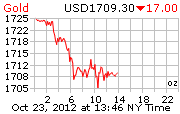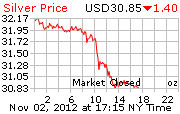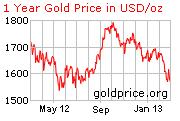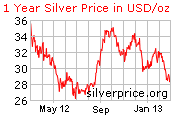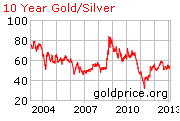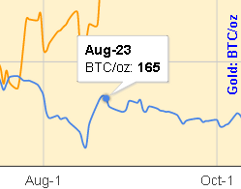Gold to rise, dollar to fall, silver to outperform: Juerg Kiener, MD & CIO of Swiss Asia Capital
Source: CNBC-TV18/MoneyControl
The rally in equity markets has clearly been surpassed by the rally that we have seen in several commodities, notably, gold but not necessarily only gold and silver. Juerg Kiener, MD & CIO of Swiss Asia Capital, in an interview on CNBC-TV18 spoke about how he sees these asset classes likely to perform especially vis-à-vis other asset classes.
Below is a verbatim transcript of his interview with CNBC-TV18’s Latha Venkatesh and Sonia Shenoy. For the complete interview watch the accompanying videos.
Q: What is the sense you are getting for commodities as an asset class itself. We have seen the first signs of inflation fears being expressed even in the West. The first rate hike has happened in the ECB and we continue to see tightening expectations both in China and in India and several Asian countries. Do you think we are close to any peak off at all for commodities?
A: We have seen quite a lot of rotational behaviour in the commodity space. Overall, however, the commodity space continues to benefit from an environment where particularly the Western world is struggling with growth and the whole world is struggling with inflation. The central banks are increasing and tightening the policy slightly but inflation is accelerating at a much higher level than what the central banks are doing.
The cap of your protection of your monetary asset which is deposit is deteriorating very fast. So, commodities are rerating, people are investing more money of the total assets in commodities and the money flow will drive this asset class higher.
Q: At the moment do you expect that this rally could continue for 2011 or do you see it peaking off perhaps now there is unlikely to be QE3 or further fiscal stimulus from the bigger economies so perhaps we are at the higher end of the up cycle?
A: No, I think we are looking at second half of the year that monetisation will accelerate. If you do the math, in the United States, you don’t have USD 1.5 trillion budget deficit, we have got USD 3 trillion budget deficit and that’s accelerating the second half and the monetisation is going to grow.
We have got the bailout mechanism in Europe which accelerates. So from that point of view I cannot see arresting of quantitative easing. You might call it whatever you might call it, municipality payouts, free money for the poor, free student loans, you can call it whatever you want but basically we are going to print money, we are going to give the money, we are going to keep economic activity growing in the sluggish environment. The gold and silver protection is key for an investor.
Q: Where does the investment opportunity lie at this point in time? Would you strengthen your buying stance in something like gold purely because it’s a safe haven mechanism or would you be cautious about the kind of huge appreciation that gold has seen?
A: We are still going up in a very controlled measurement and still sluggish. I am very comfortable accumulating gold. What we are recommending to our clients is to sell ETF gold and buy physical gold basically from the fiscal exchanges. That’s your base on investment.
Then you can allocate the money maybe to the gold mining sector and the silver sector of the corporate level at that scenario which is still trading, if you look at the ratio gold to the mines at the levels we have seen during the bear market of 2001-2002. If you look at the last four years, the index is still flat, we had four year consolidation but the earnings stream of the companies have five-seven folded.
So, most investors are still ignoring the fact that profitability is actually skyrocketing. Once we breakout on the upside we have significantly higher levels and we are looking for a 60-100% return in the mines within the next 18 months.
Q: Given the scenario that high inflation outburst continues in the second half of the year, how would you approach the currency space now? Would you go ahead and buy into the dollar or would a buying in riskier currency seem like a better thing to do?
A: The US dollar is the sickest currency of the world. It makes two-third of the global trade basket. The BRIC countries have been saying they want to have more power. If we don’t start moving it down to 50 or 30%, all other currencies will have to go up because we are going to restructure the basket.
So the dollar will continue to fall, the trust in the system in United States is collapsing because who believe Bernanke and Geithner anymore. What you are doing is actually almost irresponsible and with the trust evaporating, what you start seeing is the free flow which comes out of the repayment of the debt is getting allocated elsewhere.
We even see PIMCO saying, we don’t want to be a fixed income fund anymore. Let’s buy commodities. That tells you pretty much what the state is of the US dollar and fixed income market. Zero return, 100% risk. It is a pretty flawed trade.
Q: With commodities themselves showing a significant amount of churn, if you have to have a hierarchy of the commodities what would be that hierarchy? Would it be lead by crude first and then gold or gold and then silver and then crude and then soft?
A: From an insurance point of view your protection, your safety net in your portfolio you are going to have physical gold. Then we are picking gold and silver miners. We are buying silver physical because we are looking about USD 58 to 60 targets. We are buying rare metals; we are buying lithium, rhodium, palladium, sulphite, nickel, gold, copper, all the elements which are in a demand-supply imbalance.
We like food because if you look at what is happening on the food side, China is talking about 60% of the export market on food. As you can imagine, China can afford the price of food so therefore price will go up while there is less food left for the rest of the world. So the prices will continue to move up which is quite a significant trade.
If you look at rare earth and silver, China has been an exporter of them till about last year. They have become importers now. So that balance of free available tools in the world economy is disappearing and you want to position yourself in these demand-supply imbalances.
Q: Crude doesn’t seem to be cooling down and now with better economic data coming out of the US, higher demand is what people are expecting to further boost the fuel prices. What is your expectation on crude?
A: It’s a highly manipulated market. It has got a huge derivative market. Overall, I think it will trend up. It’s hard to predict where it goes. We have seen the Saudi’s cutting production and one wonders is if it is because they don’t want to produce more or because it cannot produce more. We are going to get alternative energy nibbling on that space.
So overall it will go up but not to the same level than all the commodities which have real shortages evolving to a higher extent. The derivative market on the crude side is a price fixing market. That’s the only way you can explain a price move from 40 to 150 and back to 40. The bankers are playing that in a very big way which is making it relatively hard to control. This is very hard for most people to store crude so it’s easier to store gold.
Q: One year gold prices have gone up 31%, and silver has gone up 147%, past six months gold up 11%, silver up 85%, past quarter gold up 11%, silver up 61%, past one month gold up 5%, silver 25%. Will your bet still be silver over gold?
A: What we have today is a huge shortage in silver. We have got the derivative market which has 100 to 200 times leveraged and the banks are trapped in the short side. That’s why silver is moving up. We have backwardation in it which shows we have no supply. Until we start seeing the short clearing and paying out the losses, the market will continue to move up and outperform.
We are looking at the gold-silver ratio going down to about 15:1 which will tell you that silver should continue to outperform. Our target of 58 to 60 is for the next 18 months. Our five year target for silver is USD 200 and for gold our target is roughly about USD 1,650-1,750 by mid year and probably about USD 2,000-2,500 next year and over a five year period, we are looking probably at a five digit number. A very rapid increase in numbers and because of that we are bullish all of it.




